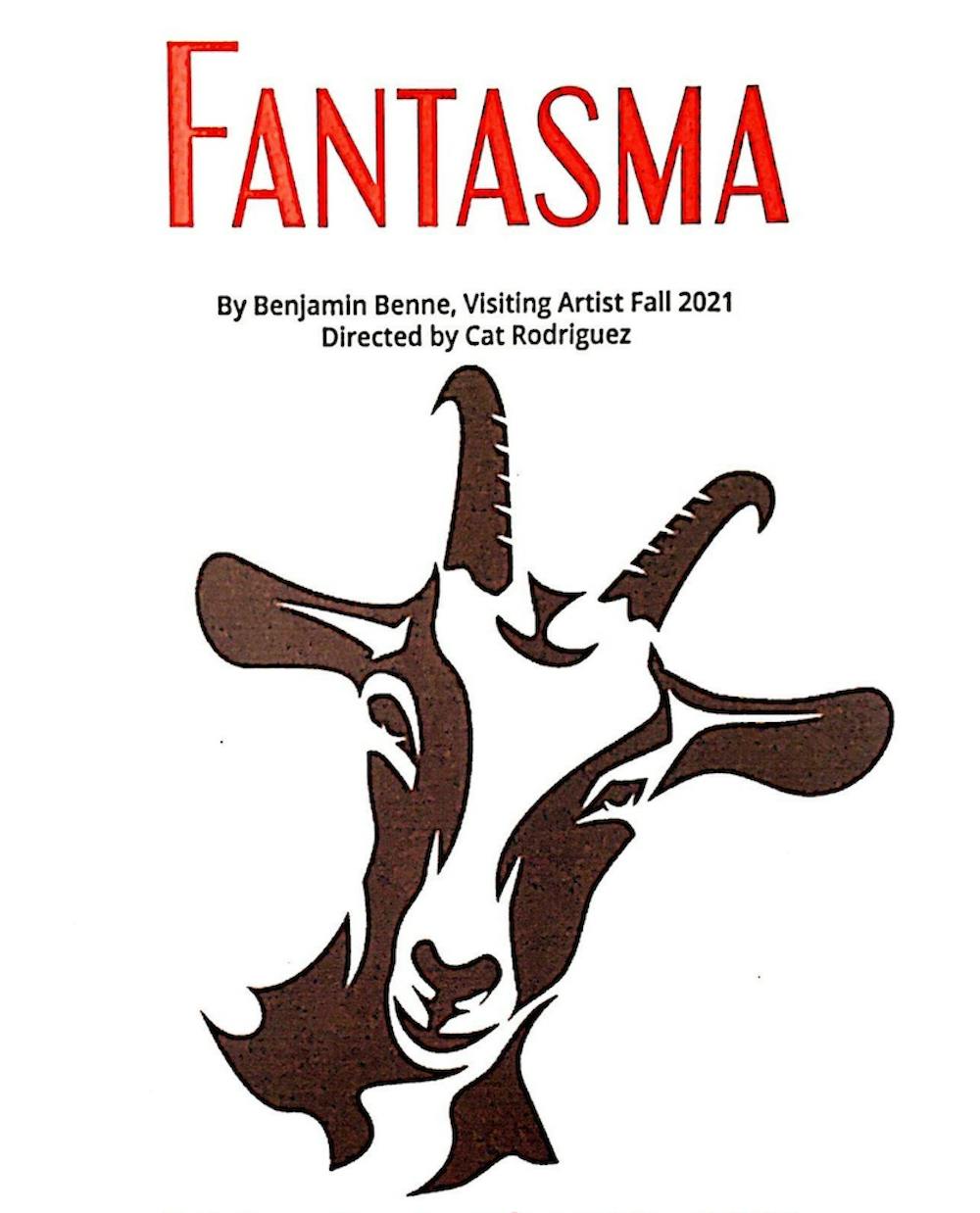A few weeks ago, I had the privilege of attending a stage reading of excerpts from Benjamin Benne’s newest play, “Fantasma,” in the Gallery at the Rubenstein Arts Center. Walking in, the room felt like a rehearsal space. The right-hand wall was covered in multicolored index cards that detailed characters, plot points, setting, and other elements of “Fantasma.” A rough semi-circle of folding chairs lined the room’s perimeter. The “stage” consisted of a rectangular table and a projector. Some of the chairs encroached on the stage area, blurring the line between audience and performer — for the reading, I was actually sitting behind two of the actors. The door to the Gallery — one of the Ruby’s signature massive barn doors — remained open for the entire hour-long reading, which heightened the inviting feel that became a major theme throughout the event.
Benjamin Benne is the Department of Theater Studies’ most recent Visiting Artist. From August 30 to Sept. 10, he and his collaborator, Catherine María Rodriguez, split their time between working on “Fantasma'' and working with Duke students. Although Benne is the official artist in residence, it is evident that he and Rodriguez are a package deal.
“I've known and been kikiing with [Benne] for years now,” Rodriguez wrote in an email. “I will say ‘abbbsolutely yes’ to anything Ben invites me to co-conspire on. It's a dream to be in close proximity to one of my dearest collaborators and friends, with access to space and time to talk, think, giggle, make.”
Benne echoed her sentiment. When asked what drew him to Duke’s visiting artists program, he cited a rare opportunity to engage in “teaching and mentoring… Also, any chance I have to work with Cat Rodriguez means I'll say, ‘Yes,’” he wrote in an email.
Benne and Rodriguez both occupy various roles in theater arts. In addition to playwright, Benne describes himself as a theater artist and puppeteer.
“For me, ‘theater artist’ means that I'm thinking about the play holistically when writing it — I'm not writing a piece of literature, I'm thinking about creating a performance,” Benne wrote “Thinking about objects (which is where my "puppeteer" hat comes on) and atmosphere and the performance space and how the bodies are moving and interacting (with space, objects, and each other).”
Rodriguez thinks of her myriad artist “wigs” as vehicles for challenging others to “grow their own humanity.”
“My work as an advocate and organizer, primarily alongside undocu and asylum-seeking peoples, has provided the best learning and grounding along those lines,” Rodriguez wrote. “Learning how to show up applies to all the work I do and in all the relationships I hold, artistic and beyond.”
Rodriguez describes herself as a "story shaper, performance maker, and culture shaker,” terms which “reflect the environs in which I labor and describe the ways in which I move,” she wrote.
“I like to play with my words, serve lqqks and also the moment at hand, all while animating rigor and fun and heart.”
Benne and Rodriguez’s artistic styles are evident in “Fantasma.” A work in progress, “Fantasma” has been commissioned by the South Coast Repertory Theatre in Costa Mesa, CA. The work was inspired when, during a nine-month visit to his family, Benne tried for the first time to document a family recipe for the Guatemalan dish chuchitos.
“I've been interested in writing a story that archived my family's experiences of living in Guatemala and emigrating to the United States for a while now,” Benne wrote..That experience made me think a lot about legacy and the things we inherit from family —especially culturally— and what are the things that have gotten lost along the way? Suddenly, I realized that this was the framework for the play I'd been wanting to write.”
Benne’s residency centered around the workshopping of “Fantasma” with Duke students involved in bringing the now-halfway-finished play to life.
Benne described collaborating with the students as “an absolute joy! Especially because this residency wasn't just about sharing my process of developing a new play with students—it was also architectured to allow me to engage with their work.”
Besides being a presentation of Benne, Rodriguez and their student collaborators', this stage reading was a lesson in art as engagement. Both over email and in-person at the reading, Rodriguez used the phrase “hungry to learn;” I interpret that phrase to include learning in not just the academic sense, but the interpersonal sense - in this case, using both a work of art and the process of making that art as avenues for learning.
The “Fantasma” reading was a unique opportunity to be physically in a space with artists and to be invited into their mental space, as well. In between excerpts, Benne shared photos that inspired the play —namely, an ingredient list for the aforementioned chuchitos—, and he and Rodriguez talked through their writing process so far. After the reading, they encouraged the audience to ask questions about the play and discuss anything about it that they found intriguing.
The reading was the opposite of how art is conventionally experienced, with definite artist-audience boundaries and little room for dialogue between the two. It served as a reminder that we all have things to learn from each other and that art should be, as Benne so appropriately put it, “playful.”
Get The Chronicle straight to your inbox
Sign up for our weekly newsletter. Cancel at any time.

